UHF 8-Bay Hi-VHF Shootout |
That's not a typo! Yes, this is a comparison of UHF Antenna response over the Hi-VHF band, channels 7 through 13. A number of forums have discussed, for example, the CM4228HD's usable Hi-VHF gain, and this comparison aims to establish just how significant that gain is.
The Antennas Direct C5 loop antenna is included in this comparison to serve as a VHF design reference. It has been compared to the Antenna Craft Y10-7-13 and demonstrates approximately 4-6dB gain over the VHF band. The main antennas being compared to the C5 are the 8-Bay BowTie designs including the Channel Master CM4228HD, Antennas Direct DB8, and Winegard 8800HD. Additionally, although it is only a 4-Bay design, the Kosmic SuperQuad is included because it has elsewhere been described as having useful Hi-VHF response.
| C5 | CM4228HD | DB8 | 8800HD | SuperQuad |
 |
 |
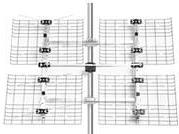 |
 |
 |
Reference Point - the Y10-7-13 Yagi verses the C5 Loop Antenna:
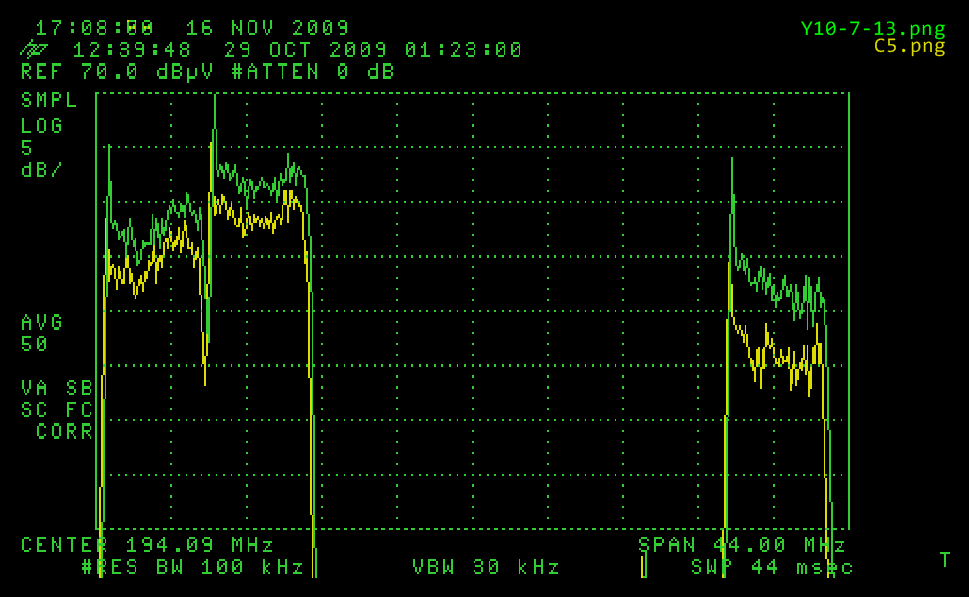
This is the relative response of the C5 compared to the Y10-7-13 Yagi, which has roughly 10 dB of gain
across the Hi-VHF band. In comparison, the C5 appears to have about 3 to 4 dB less gain at its low end,
and about 6 to 7 dB less gain at the high end. That would imply the C5 has about 6 dB of gain at its low
end and about 3 to 4 dB of gain at its high end.
C5 versus CM4228HD:
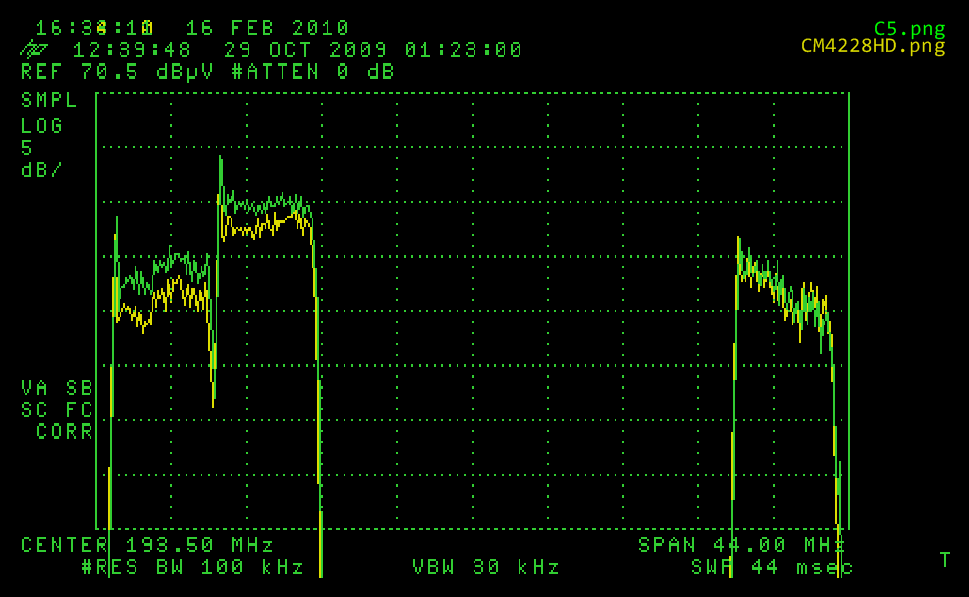
Ok, this is probably the main substance of this comparison; just how much Hi-VHF gain does the CM422HD
actually have? Without making any statements about absolute gain, the above two comparisions lead to the conclusion that the CM4228HD's Hi-VHF gain is an average of about 7 dB below the Y10-7-13's.
At the low end you arrive at this by noting the C5's low end gain is about 3 to 4 dB below the Y10-7-13's,
and the CM4228HD's gain is about 3 to 4 dB below the C5's at the low end. That adds up to an average of
about a 7 dB difference.
At the high end we note again the C5's gain is about 6 to 7 dB below the Y10-7-13's, and the CM4228HD's
gain is just about the same as the C5's.
Thus, the overall observation is that the C5's gain is about 6 to 7 dB below the Y10-7-13's, and if we accept
that the Y10-7-13's gain is close to the published 10 dB, that would imply the CM4228HD's Hi-VHF gain is about
3 to 4 dB across the Hi-VHF Band.
C5 versus DB8:
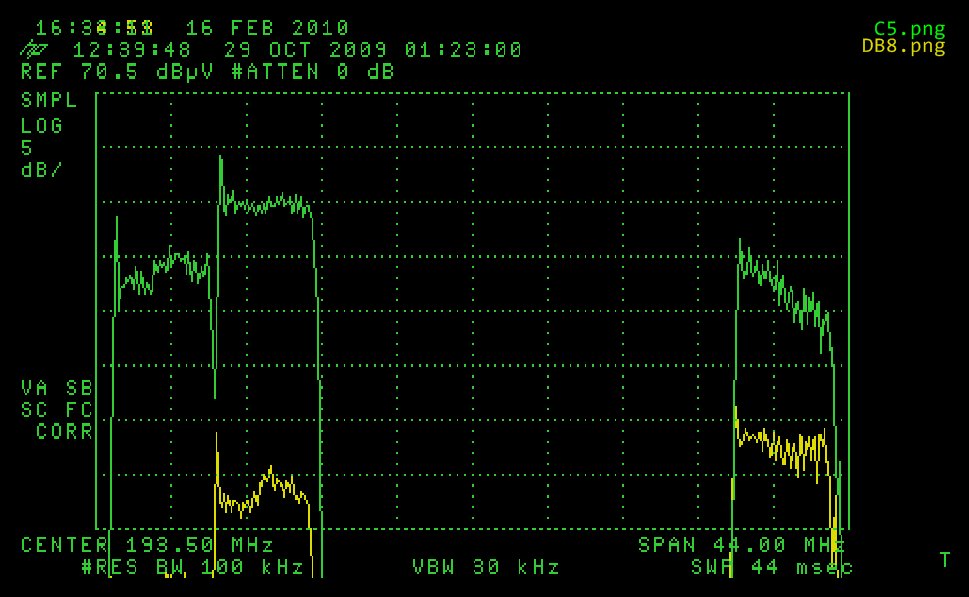
Well, a serious "no show" for the DB8, sorry to say. That channel 7 response is about 8 dB below the
baseline, and that implies its gain at channel 7 is about 30 dB below the C5's, and about 15 dB below
the C5's at channel 13.
C5 versus 8800HD:
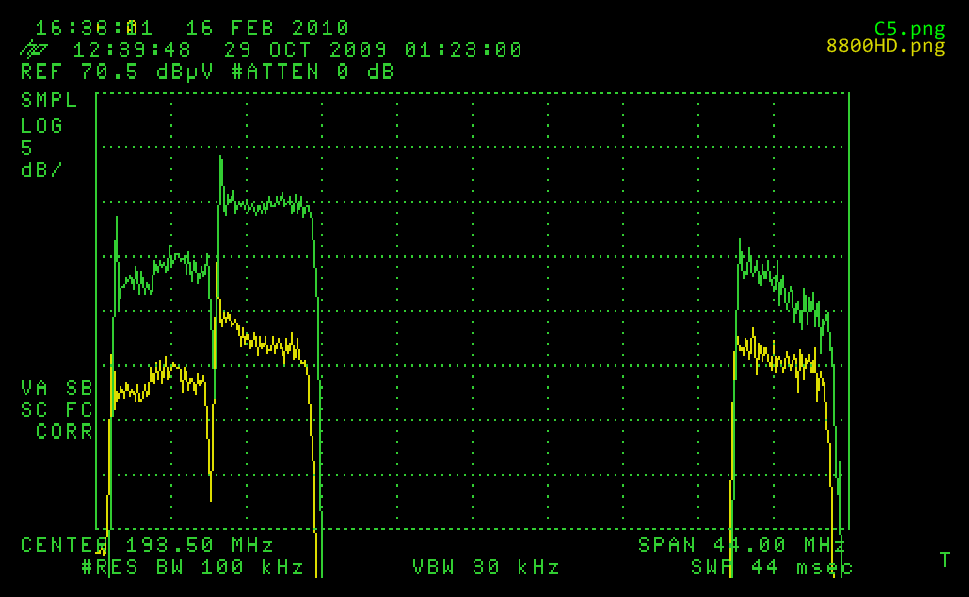
The Winegard 8800HD fairs slightly better. Its usable.
C5 vs SuperQuad:

This was the biggest surprise of the run. This SuperQuad being a 4-Bay versus 8-Bay design, you might
have been skeptical that it would show up on the screen at all. However, the capture speaks for itself.
The SuperQuad is within about 3 to 6 dB, or so, of the C5.
Conclusion
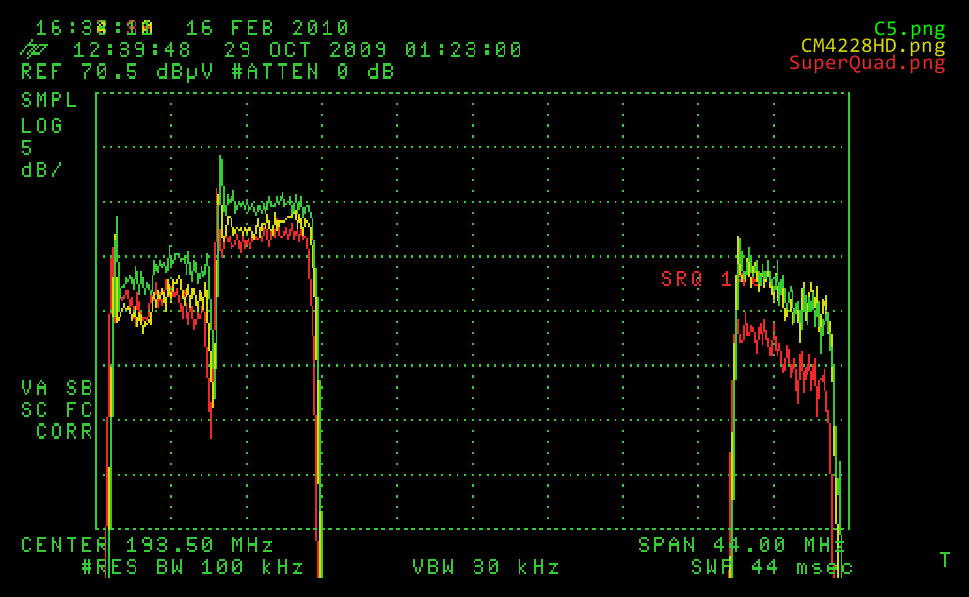
The bottom line is that some of these UHF N-Bay antennas are really quite useful over the Hi-VHF band,
and that's really significant. It implies that for many situations a single antenna might serve for both bands!
If you need better gain, or directivity, there would also be a strong arguement for ganging two antennas
horizontally, or vertically, depending on whether or not there is horizontal or vertical multipath to overcome.
For the author, the choice would be the CM4228HD. Since it fairs very well in the UHF Shootout, as well
as in this VHF Shootout. It becomes a very clear choice.